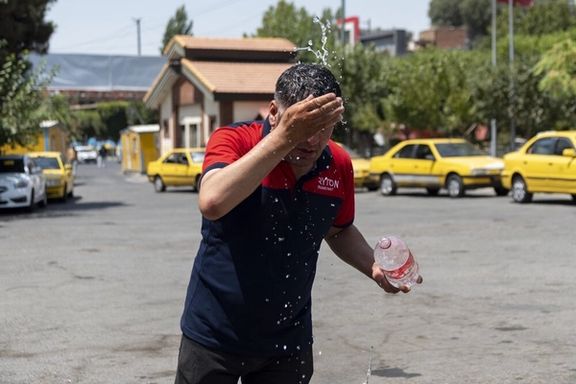'A big prison with no water or power': fed up Iranians rue outages

Iranians are speaking out with increasing urgency over chronic water and electricity outages that upend daily life and fuel fury at the government.

Iranians are speaking out with increasing urgency over chronic water and electricity outages that upend daily life and fuel fury at the government.
With temperatures topping 40°C in Tehran and nearing 50°C in the south, many now face all-day water cuts—or near zero pressure—and frequent power failures.
Dozens shared their experiences with Iran International, highlighting the scale of the crisis and its toll nationwide.
“This is a big prison called Iran that has neither water nor electricity,” said a woman from Fardis, a suburb of Karaj.
“Water outage again… People have reached the breaking point. Do something before it’s too late, you irresponsible officials!” another woman pleaded.
A man in Tabriz sent footage of a kitchen sink filled with unwashed dishes. “There has been no water for 12 hours,” he said, ending his message with: “Death to the Islamic Republic, death to Khamenei.”
Even Gilan—a lush, northern province with over 1.2 meters of rainfall—has seen outages, challenging claims that drought alone is to blame.
No water, no power
Low pressure is compounding the crisis. In many buildings, only the lower floors receive water—barely.
Some residents install private pumps to reach upper floors, but these depend on electricity, which is also being cut.
“The lower floors have low-pressure water, but the upper floors, even with a pump, have none,” wrote journalist Maryam Shokrani on X.
A refrigerator technician in Tehran said he hadn’t been able to test appliances for over a week. “There’s either no electricity or no water to check if the cold water and icemaker work,” he said.
Small businesses without backup systems are especially affected.

More than a drought
Officials blame the crisis on “unprecedented drought.” Iran is in its second-driest year in five decades, with rainfall down 43% from last year. Key dams, especially those feeding Tehran, are critically low.
Government data shows 24 of 31 provinces are under “water stress,” including major cities like Tehran, Mashhad, Tabriz, and Isfahan.
In response, the government shut down or shortened hours at offices and banks in several provinces on Wednesday, citing peak demand. Spokeswoman Fatemeh Mohajerani said closures may continue.
Visions gone dry
Experts say the real roots lie in chronic mismanagement, flawed policy, and decades of unsustainable water use in agriculture and industry.
Since 2000, Supreme Leader Ali Khamenei has called for population growth and food self-sufficiency in crops like wheat and rice—both highly water-intensive. In a 2021 speech, he reiterated that producing wheat, corn, and barley domestically was “both necessary and achievable.”
Experts argue these goals have worsened shortages, particularly in arid regions.
In Yazd, among Iran’s driest cities, officials have permitted sturgeon farming—a water-heavy industry—to produce caviar for export. The city has also grown rapidly due to industrial expansion.
Now, Yazd is locked in disputes with Isfahan over scarce water, highlighting how poor national coordination is fueling provincial rivalries. Both cities are major industrial hubs, making the stakes especially high.